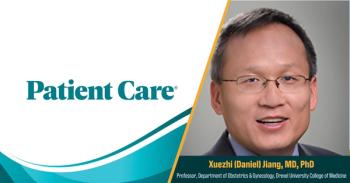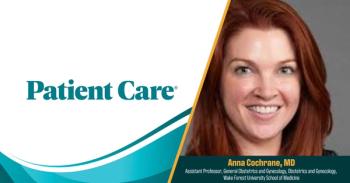
More Evidence for Breast Cancer Declines as HRT Use Drops
PORTLAND, Ore. -- Researchers here believe they've successfully tied a recent decline in breast cancer incidence to the rapid drop in use of hormone replacement therapy after 2002.
PORTLAND, Ore., July 26 -- Researchers here believe they've successfully tied a recent decline in breast cancer incidence to the rapid drop in use of hormone replacement therapy after 2002.
Breast cancer incidence has paralleled trends in mammography and hormone replacement therapy (HRT) since the 1980s, Andrew G. Glass, M.D., of Kaiser Permanente Northwest, and colleagues, reported in the Aug. 1 issue of the Journal of the National Cancer Institute.
Among members of a large health plan, age-adjusted breast cancer incidence rose 25% from the early 1980s to 1993 with the introduction of screening mammography and an additional 15% through 2001 as HRT use increased, they said.
Then rates dropped 18% by 2003-2004, following a precipitous 75% drop in HRT prescriptions in 2002, after the Women's Health Initiative linked HRT to breast cancer.
These findings match the 6.7% decline in breast cancer incidence from 2002 to 2003 first found by the National Cancer Institute's Surveillance, Epidemiology, and End Results (SEER) program, the researchers said.
The SEER investigators pointed to a 38% decrease in U.S. HRT prescriptions as a possible cause but did not have data to rule out mammography changes in their population, leading some to challenge the association with HRT. (See
So, Dr. Glass and colleagues attempted to clear up some of the controversy by studying all three factors in a single, defined population.
The researchers used tumor registry, clinical, pathology, and pharmacy data from the Kaiser Permanente Northwest health plan to compare breast cancer incidence rates in two-year moving averages with use of screening mammography and dispensed HRT prescriptions between 1980 and 2006.
They found a total of 7,386 women in the health plan who were diagnosed with invasive breast cancer during the study period.
Breast cancer occurrence rates rose 28% from the 1982-'83 period to 1992-'93 (103.2 versus 131.7 per 100,000).
This rise was consistent with the simultaneous adoption of screening mammography by the health plan, Dr. Glass and colleagues said.
Before 1982, less than 5% of the health plan's women subscribers 45 or older had a mammogram each year. But by 1993, 75% of women had had a mammogram within the preceding two years.
The rapid increase in breast cancer rates through the early 1990s was likely a reflection of the large percentage of women undergoing their first screening mammogram, which would have picked up new tumors, increased lead time, leading to a decrease in age at diagnosis, and detection of small, slower-growing tumors that may not have been caught clinically, the investigators suggested.
Rates increased more slowly through the mid- to late-1990s for an overall 15% change by 2000-2001 (151.3 per 100,000).
Rates then "dropped dramatically"-18%- by 2004 (123.6 per 100,000) and plateaued through 2006 (126.2 per 100,000) at a level last seen in the mid-1980s, the researchers wrote.
But, during this period the proportion of women who received mammography had increased only 4%, the researchers said.
This "essentially rules out mammography as an explanation for the second rise in incidence or the steep drop in incidence" from the 2001-2002 period through 2005-2006, they said.
Rather, they said, the trends parallel changes in HRT use.
In 1988, about 14% of women ages 45 to 59 in the health plan received estrogen and progestin. This proportion rose steadily to around 25% by 1994, leveled off through 2001, then fell to roughly 10% by 2003 and about 6% by 2006.
In an accompanying editorial, Donald A. Berry, Ph.D., and Peter M. Ravdin, M.D., Ph.D., both of the University of Texas M. D. Anderson Cancer Center, cautioned that neither their SEER data nor Dr. Glass's study could prove the associations despite the strong circumstantial evidence.
Nevertheless, they wrote, "the only known factor that would seem to explain the precipitous drop in incidence is the sharp decrease in use of menopausal hormone therapy."
After methodically going through potential mechanisms, they concluded that "the most plausible explanation is that stopping menopausal hormone therapy removes the fuel that is promoting the growth of some tumors."
"The overall population impact on breast cancer incidence rates would be immediate and noticeable," they added, but would be unlikely to have an effect on breast cancer mortality.
In both studies, the changes in breast cancer incidence were primarily restricted to women over age 45 and to estrogen receptor positive tumors.
"Indeed, the very tumors whose clinical incidence decreases because of stopping menopausal hormone therapy use may be the ones that are successfully treated and therefore least likely to cause breast cancer-related mortality," Drs. Berry and Ravdin wrote.
Newsletter
Enhance your clinical practice with the Patient Care newsletter, offering the latest evidence-based guidelines, diagnostic insights, and treatment strategies for primary care physicians.






































































































































































































































































































